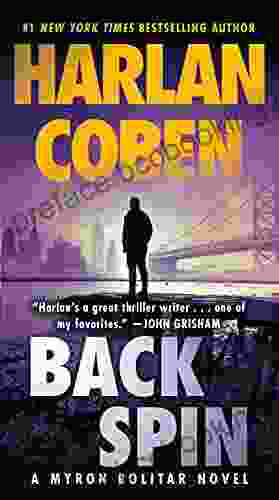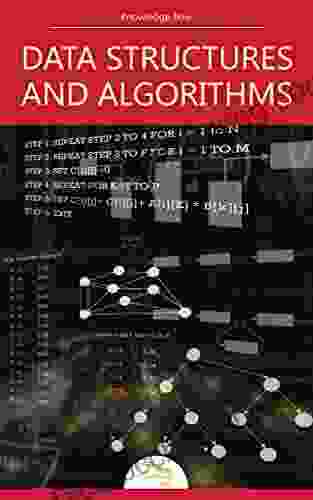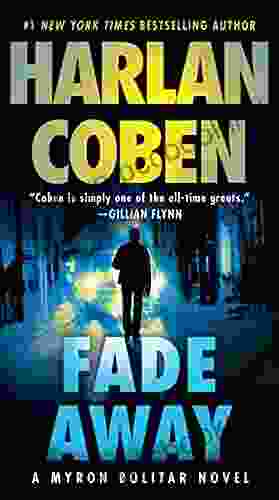How The Greatest Generation Of Physicists Uncovered The Quantum World

4.6 out of 5
| Language | : | English |
| File size | : | 3201 KB |
| Text-to-Speech | : | Enabled |
| Screen Reader | : | Supported |
| Print length | : | 344 pages |
| Lending | : | Enabled |
The early 20th century was a time of great intellectual ferment in the world of physics. Albert Einstein had just published his theory of relativity, and the world was beginning to understand the true nature of space and time. At the same time, a new generation of physicists was emerging, who would revolutionize our understanding of the quantum world.
These physicists, who came to be known as the "greatest generation," included Niels Bohr, Werner Heisenberg, Erwin Schrödinger, Paul Dirac, and Max Planck. They were all brilliant minds who made groundbreaking contributions to our understanding of the universe.
One of the most important discoveries of the greatest generation of physicists was the development of quantum theory. Quantum theory is a branch of physics that deals with the behavior of matter and energy at the atomic and subatomic level. It is one of the most successful theories in science, and it has led to the development of many new technologies, including lasers, transistors, and nuclear weapons.
The greatest generation of physicists also made important discoveries about subatomic particles. They discovered that atoms are made up of even smaller particles, such as electrons, protons, and neutrons. They also discovered that these particles have wave-like properties, as well as particle-like properties. This discovery led to the development of a new model of the atom, which is known as the quantum mechanical model.
The work of the greatest generation of physicists has had a profound impact on our understanding of the universe. They have revolutionized our understanding of space, time, matter, and energy. Their discoveries have led to the development of many new technologies, and they have helped us to better understand the world around us.
Niels Bohr
Niels Bohr was a Danish physicist who made significant contributions to the development of quantum theory. He is best known for his Bohr model of the atom, which was the first model to correctly explain the spectrum of light emitted by atoms.
Bohr was born in Copenhagen, Denmark, in 1885. He studied physics at the University of Copenhagen, and he received his doctorate in 1911. After graduation, Bohr worked at the University of Manchester, where he collaborated with Ernest Rutherford on the development of the Rutherford model of the atom.
In 1913, Bohr published his own model of the atom, which was based on the idea that electrons orbit the nucleus in discrete energy levels. Bohr's model was able to explain the spectrum of light emitted by atoms, which was a major breakthrough in the development of quantum theory.
Bohr continued to work on the development of quantum theory throughout his career. He was awarded the Nobel Prize in Physics in 1922 for his contributions to the field.
Werner Heisenberg
Werner Heisenberg was a German physicist who made significant contributions to the development of quantum theory. He is best known for his uncertainty principle, which states that it is impossible to know both the position and momentum of a particle with perfect accuracy.
Heisenberg was born in Würzburg, Germany, in 1901. He studied physics at the University of Munich, and he received his doctorate in 1923. After graduation, Heisenberg worked at the University of Göttingen, where he collaborated with Max Born and Pascual Jordan on the development of matrix mechanics, which is one of the two main formulations of quantum theory.
In 1927, Heisenberg published his uncertainty principle, which was a major breakthrough in the development of quantum theory. The uncertainty principle has profound implications for our understanding of the universe, and it is one of the cornerstones of modern physics.
Heisenberg continued to work on the development of quantum theory throughout his career. He was awarded the Nobel Prize in Physics in 1932 for his contributions to the field.
Erwin Schrödinger
Erwin Schrödinger was an Austrian physicist who made significant contributions to the development of quantum theory. He is best known for his Schrödinger equation, which is a wave equation that describes the behavior of quantum mechanical systems.
Schrödinger was born in Vienna, Austria, in 1887. He studied physics at the University of Vienna, and he received his doctorate in 1910. After graduation, Schrödinger worked at the University of Zurich, where he collaborated with Albert Einstein on the development of general relativity.
In 1926, Schrödinger published his Schrödinger equation, which was a major breakthrough in the development of quantum theory. The Schrödinger equation is a wave equation that describes the behavior of quantum mechanical systems, and it has been used to explain a wide range of phenomena, from the behavior of electrons to the structure of atoms.
Schrödinger continued to work on the development of quantum theory throughout his career. He was awarded the Nobel Prize in Physics in 1933 for his contributions to the field.
Paul Dirac
Paul Dirac was a British physicist who made significant contributions to the development of quantum theory. He is best known for his Dirac equation, which is a relativistic wave equation that describes the behavior of electrons.
Dirac was born in Bristol, England, in 1902. He studied physics at the University of Cambridge, and he received his doctorate in 1926. After graduation, Dirac worked at the University of Göttingen, where he collaborated with Werner Heisenberg on the development of quantum field theory.
In 1928, Dirac published his Dirac equation, which was a major breakthrough in the development of quantum theory. The Dirac equation is a relativistic wave equation that describes the behavior of electrons, and it has been used to explain a wide range of phenomena, from the spin of electrons to the existence of antimatter.
Dirac continued to work on the development of quantum theory throughout his career. He was awarded the Nobel Prize in Physics in 1933 for his contributions to the field.
Max Planck
Max Planck was a German physicist who made significant contributions to the development of quantum theory. He is best known for his Planck's law, which describes the spectrum of blackbody radiation.
Planck was born in Kiel, Germany, in 1858. He studied physics at the University of Munich, and he received his doctorate in 1879. After graduation, Planck worked at the University of Kiel, where he became a professor of physics in 1892.
In 1900, Planck published his Planck's law, which was a major breakthrough in the development of quantum theory. Planck's law describes the spectrum of blackbody radiation, which is the radiation emitted by a blackbody, which is a perfect absorber and emitter of radiation. Planck's law was the first law to successfully explain the spectrum of blackbody radiation, and it provided the first evidence for the quantization of energy.
Planck continued to work on the development of quantum theory throughout his career. He was awarded the Nobel Prize in Physics in 1918 for his contributions to the field.
The greatest generation of physicists was a group of brilliant minds who revolutionized our understanding of the universe. They developed quantum theory, discovered subatomic particles, and laid the foundation for many new technologies. Their work has had a profound impact on our world, and it continues to inspire new generations of scientists.
4.6 out of 5
| Language | : | English |
| File size | : | 3201 KB |
| Text-to-Speech | : | Enabled |
| Screen Reader | : | Supported |
| Print length | : | 344 pages |
| Lending | : | Enabled |
Do you want to contribute by writing guest posts on this blog?
Please contact us and send us a resume of previous articles that you have written.
 Book
Book Novel
Novel Page
Page Chapter
Chapter Text
Text Story
Story Genre
Genre Reader
Reader Library
Library Paperback
Paperback E-book
E-book Magazine
Magazine Newspaper
Newspaper Paragraph
Paragraph Sentence
Sentence Bookmark
Bookmark Shelf
Shelf Glossary
Glossary Bibliography
Bibliography Foreword
Foreword Preface
Preface Synopsis
Synopsis Annotation
Annotation Footnote
Footnote Manuscript
Manuscript Scroll
Scroll Codex
Codex Tome
Tome Bestseller
Bestseller Classics
Classics Library card
Library card Narrative
Narrative Biography
Biography Autobiography
Autobiography Memoir
Memoir Reference
Reference Encyclopedia
Encyclopedia Marjorie Savage
Marjorie Savage Stacey Steinberg
Stacey Steinberg Michael J Decker
Michael J Decker Kevin Sessums
Kevin Sessums Graham Hancock
Graham Hancock Joyce Tyldesley
Joyce Tyldesley Gustav Stickley
Gustav Stickley Gordon W Green
Gordon W Green Gwen Hayes
Gwen Hayes Gregory Cochran
Gregory Cochran Sheena Iyengar
Sheena Iyengar Gus Van Auden
Gus Van Auden Mark Solms
Mark Solms Warren Dockter
Warren Dockter Liz Hauck
Liz Hauck Hannah Pryor
Hannah Pryor Janet Lee Carey
Janet Lee Carey John Sefton
John Sefton Gina Rossi Armfield
Gina Rossi Armfield R Bruce Richardson
R Bruce Richardson
Light bulbAdvertise smarter! Our strategic ad space ensures maximum exposure. Reserve your spot today!

 Clinton ReedBaseball's Hispanic Pitching Powerhouses: A Celebration of Latino Excellence...
Clinton ReedBaseball's Hispanic Pitching Powerhouses: A Celebration of Latino Excellence...
 Samuel WardUnlocking Growth Through Product-Led Strategy: A Comprehensive Summary of Wes...
Samuel WardUnlocking Growth Through Product-Led Strategy: A Comprehensive Summary of Wes... Yasushi InoueFollow ·19.9k
Yasushi InoueFollow ·19.9k T.S. EliotFollow ·15.6k
T.S. EliotFollow ·15.6k Clark CampbellFollow ·13.7k
Clark CampbellFollow ·13.7k Richard AdamsFollow ·9.8k
Richard AdamsFollow ·9.8k Elmer PowellFollow ·16.2k
Elmer PowellFollow ·16.2k Harry CookFollow ·14.7k
Harry CookFollow ·14.7k Jessie CoxFollow ·15k
Jessie CoxFollow ·15k Paul ReedFollow ·7.3k
Paul ReedFollow ·7.3k

 Brady Mitchell
Brady MitchellMaster IELTS Speaking: The Ultimate Guide to Success
Kickstart Your IELTS...

 Branden Simmons
Branden SimmonsBack Spin: A Thrilling Myron Bolitar Novel
Get ready to embark on a...

 Marc Foster
Marc FosterData Structures and Algorithms: A Comprehensive Guide to...
In the ever-evolving...

 Jeff Foster
Jeff FosterUnveiling the Basics of Microbiology: A Comprehensive...
The world of...

 J.D. Salinger
J.D. SalingerHold Tight Suspense Thriller: A Gripping Page-Turner That...
Are you ready for a suspense thriller that...
4.6 out of 5
| Language | : | English |
| File size | : | 3201 KB |
| Text-to-Speech | : | Enabled |
| Screen Reader | : | Supported |
| Print length | : | 344 pages |
| Lending | : | Enabled |









